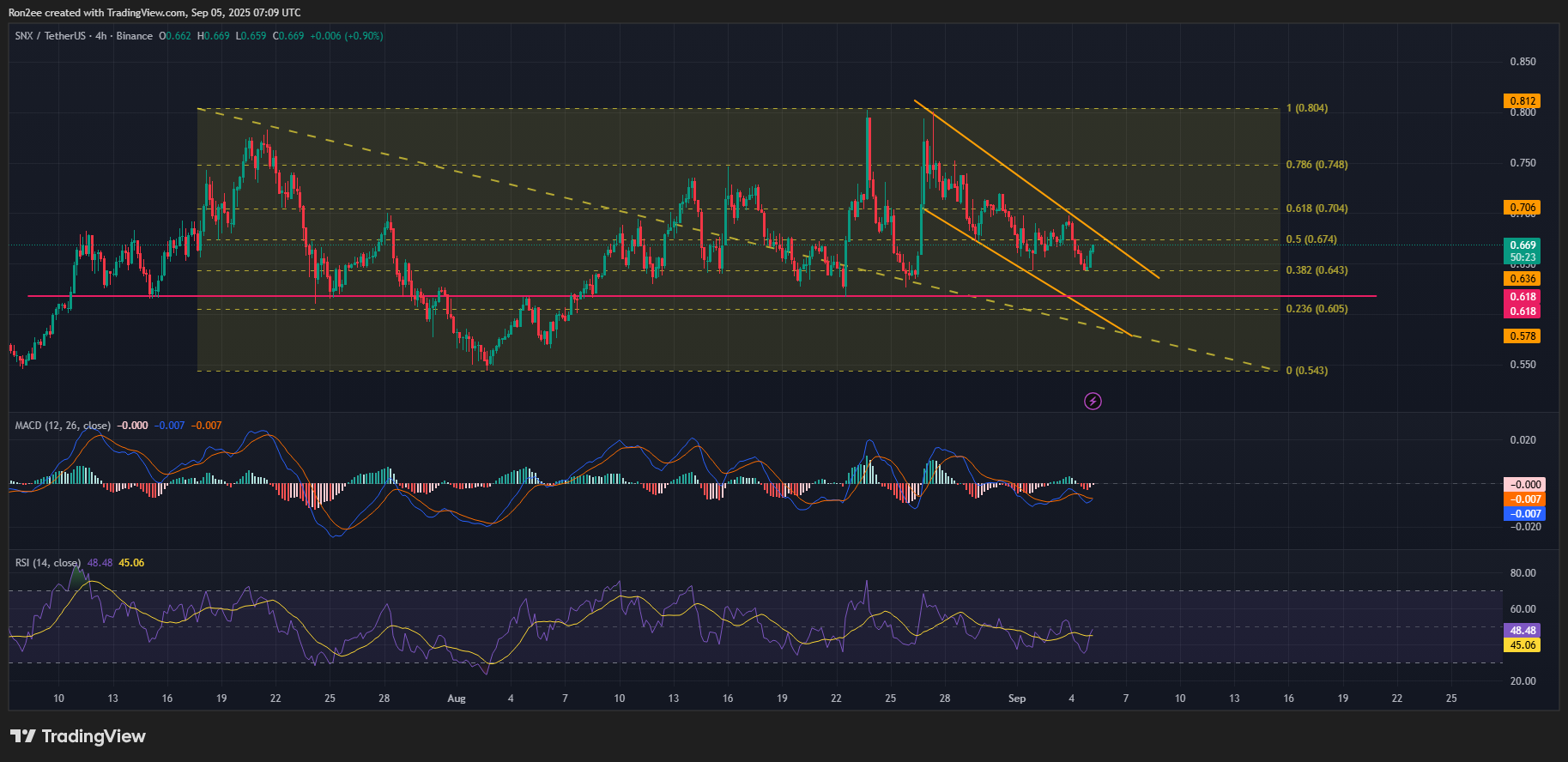Synthetix (SNX) price risks 10% drop as technicals flag bearish signs
SNX price looks set for a deeper correction as technicals remain bearish for the asset, while its algorithmic stablecoin sUSD fails to maintain its peg to the U.S. dollar.
- SNX price is down 10% over the past 7 days.
- Synthetix’s sUSD stablecoin lost its peg to the U.S. dollar.
- Price action has been confined within a descending parallel channel.
According to data from crypto.news, Synthetix (SNX) was trading at $0.66, down 9.5% over the last 7 days and 70% under its year-to-date high.
The main reason why SNX has been in a downtrend is the ongoing crisis in its sUSD stablecoin.
The stablecoin has failed to maintain its peg to the U.S. dollar ever since it introduced changes to how sUSD is issued and backed under an improvement proposal in April 2025.
The stablecoin’s price fell as low as $0.73 shortly following the move. While it managed to recover to $0.97 over the next two months, the stablecoin’s price faced another major drop to $0.841 in July. At press time, sUSD was trading at $0.987, still short of its intended $1 peg.
sUSD’s failure to maintain its peg reflects a critical protocol weakness, which could continue to weigh on investor sentiment and dampen confidence in the broader Synthetix ecosystem.
Data from CoinGlass shows that open interest for SNX has dropped by 1% to $19.6 million, while the long/short ratio has fallen below 1. It reveals that a growing number of traders are positioned bearishly on SNX in the short term.
SNX price analysis
SNX had been trading within a descending parallel channel for the past week on the 4-hour chart. A descending parallel channel is formed when an asset’s price forms lower highs and lower lows. This is considered a solid sign of bearish continuation.

When adding the Moving Average Convergence Divergence indicator to the mix, it had also turned downward. As such, it is safe to say the momentum for now would most likely be bearish.
On top of this, the RSI was at 45, which places it within neutral-to-weak territory, which is another confirmation that the price may continue heading downwards from current levels.
Considering the above, SNX is likely to target the $0.60 support level, which marks a 10% drop from the current price level.
If this support fails to hold, it could open the door to further losses, with a potential retest of its August low of $0.54 possible.
Conversely, a breakout above the upper boundary of the descending channel would invalidate the bearish setup and could signal the beginning of a short-term trend reversal.
You May Also Like

Here’s Why Mantle (MNT) Price Is Pumping Today

Cashing In On University Patents Means Giving Up On Our Innovation Future
